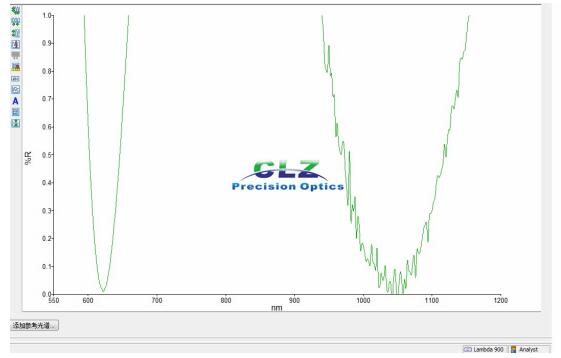Aluminum Coated Mirrors: Do You Really Need It? This Will Help You Decide!
You know that a mirror is an object with a surface that has a good specular reflection. That is, it is smooth enough to form an image. The most familiar type of mirror is a flat mirror, which has a flat surface. Curved mirrors are also used to produce a magnified or reduced image or to focus light or simply distort a reflected image.
The choice of coating can enhance or diminish the emissivity or reflectivity of a mirror. Metal plating is the most common form of mirror coating. Many metals, from gold and zinc to copper and platinum, can be used for coatings. Aluminum coatings can provide unique advantages and improve the functionality of optical mirrors.
Determining Optical Reflector Performance
When selecting a coating for your optical reflector, you want to be sure that the proper plating is applied for the intended application. Determining the most applicable choice involves understanding how the properties of the various metal finishes will affect the mirror's performance. Two key aspects of mirror performance are reflectance, which is how much light is reflected, and emissivity, which is the amount of energy radiated from its surface.
Reflectance is inversely proportional to emissivity, which means that the higher the emissivity of a mirror, the lower the reflectance. Coated optical mirrors become more luminous if the coating loses its luster, oxidizes, or becomes rough rather than smooth.
Various coatings are used to increase the reflective properties of the optical system. The number of coatings and the thickness of each layer directly affect the interference rate they provide. The placement of these coatings is as important as the metal used. When the coatings are applied correctly, light transmission can be combined to greater amplitudes due to phase length interference. However, if the coating is applied at an unexpected angle of incidence, phase extinction interference can occur and render the coating itself completely ineffective.
Benefits of Aluminum Mirrors
Aluminum is a popular choice for mirror coatings because of its reflectivity. Aluminum has the highest reflectivity in the ultraviolet and infrared spectral ranges, and aluminum trails only silver in the visible and near-infrared ranges. Bare aluminum can be used in the optical mirrors of space telescopes to achieve greater optical bandwidth. Unfortunately, the natural production of aluminum oxide reduces the reflectivity of aluminum coatings. To solve this problem, an additional protective coating can be applied to the aluminum. A natural barrier oxide layer can be formed on the aluminum mirror to protect it from further corrosion. Unfortunately, this barrier is not easy to clean and can be altered depending on other environmental factors. Because of this unreliability, protective coatings are often placed on bare aluminum. This usually involves a dielectric coating that successfully protects the surface from damage. However, this may reduce the reflectivity of the aluminum. Atomic layer deposition techniques or other deposition methods may improve protection while affecting specular reflection to a limited extent.

Protected Aluminum
Standard protective aluminum is our most popular mirror coating for visible and near infrared applications. A λ/2 coating of silicon monoxide (SiO) is commonly used as an overcoat to protect delicate aluminum. This treatment provides a wear resistant surface while maintaining the performance of the aluminum mirror.
Enhanced Aluminum
In enhanced aluminum coatings, a multilayer dielectric film on top of the aluminum is used to increase the reflectivity in the visible or UV region. This coating is ideal for applications that require increased reflectivity in the 400 - 650 nm range. The multilayer film also provides improved handling characteristics of the protected aluminum coating.
Applications using aluminum mirrors
As a worldwide resource, aluminum's properties make it one of the most versatile non-ferrous metals for a variety of applications. While it can be fragile in its pure form, chemical treatment and alloying processes have greatly increased its strength. These increased mechanical properties make it a valuable resource in a variety of applications in industries such as aerospace, medical, optical and defense.
The two different classifications of aluminum alloys are cast and forged. Casting is the most widely used and is applied in the automotive industry. There are seven types of malleable alloys with different tensile strength limitations that can be used for plating applications. Both electroplating and chemical plating processes are suitable for aluminum, especially in the telecommunications and energy industries.
Aluminum coatings can be used for telescope optics. NASA's Cosmic Origins program developed aluminum coatings to maximize the reflectivity of astronomical telescopes. This coating is used specifically to help their scientists study the far ultraviolet portion of the spectrum. The aluminum coating is durable enough to allow them to achieve up to 80% far-UV reflectivity year-round without significant deterioration of the coating.
The optical system on the Hubble Space Telescope is a good example of the application of aluminum coatings. The telescope's optical system, known as the Optical Telescope Assembly, collects infrared, visible and ultraviolet light through the use of two mirrors. Each of these mirrors is coated with aluminum to provide optimal reflectivity. To prevent surface oxidation of the aluminum, a magnesium fluoride layer covers the top layer of aluminum.
Although the presence of oxygen may cause aluminum to corrode, even if the aluminum does have an additional protective coating, it is hoped that future optical mirrors for astronomical applications can be placed far enough away from the Earth to not be affected by these environmental factors. In this case, mirrors with a protected aluminum coating may be well preserved and can be used properly for long periods of time.
评论
发表评论